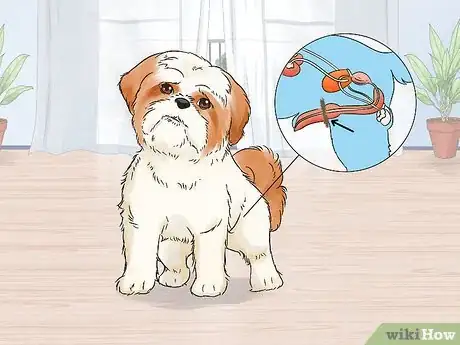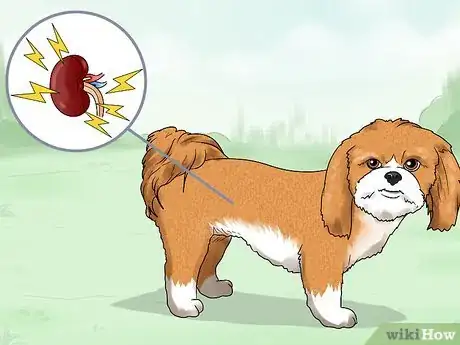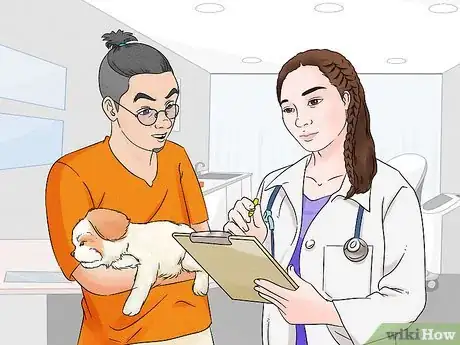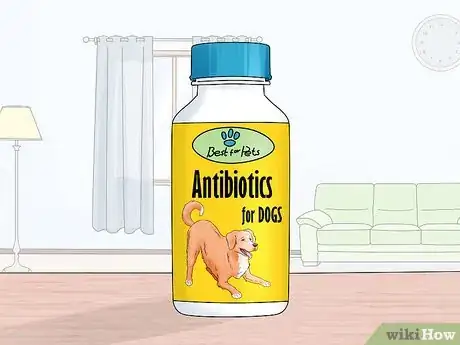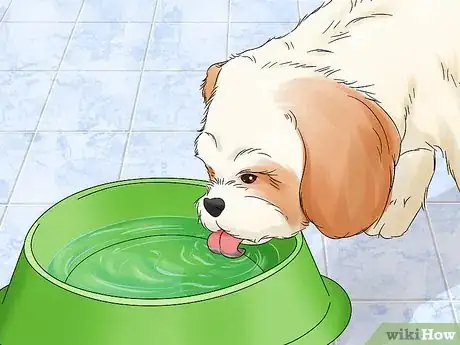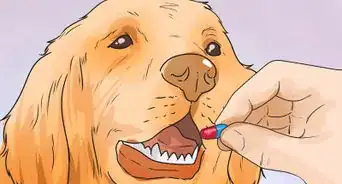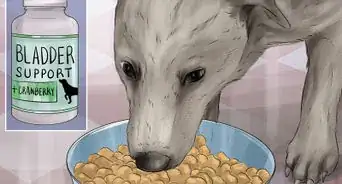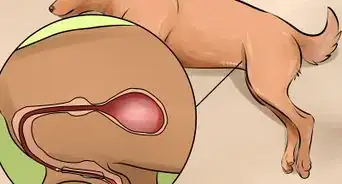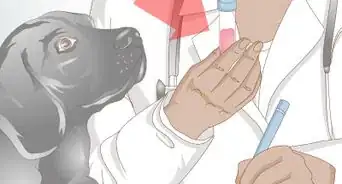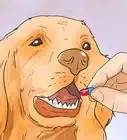X
This article was co-authored by Pippa Elliott, MRCVS. Dr. Elliott, BVMS, MRCVS is a veterinarian with over 30 years of experience in veterinary surgery and companion animal practice. She graduated from the University of Glasgow in 1987 with a degree in veterinary medicine and surgery. She has worked at the same animal clinic in her hometown for over 20 years.
This article has been viewed 16,449 times.
Does your canine companion seem to be having trouble going to the bathroom? It could be a UTI. But don’t worry—it’s usually easy to treat.
Steps
Question 1 of 6:
Background
-
1Urinary tract infections are totally common in dogs. In fact, a bacterial UTI is the most common infectious disease that a dog can get—14% of all dogs get one during their lifetime. Unlike humans, who can experience pain and discomfort when they have a UTI, dogs often don’t have any symptoms. However, if it isn’t treated, a UTI can cause other health issues for your dog.[1]
-
2UTIs are more frequent in older dogs ages 7 and up. UTIs can be uncomfortable or painful for your furry friend, and they tend to occur more frequently in older dogs. Additionally, female dogs are more prone to them because they have a shorter urethra, which is the tube where urine leaves the body. While any dog breed can have a UTI, some breeds, such as Shih Tzu, Bichon Frise, and Yorkshire Terriers, are more susceptible to issues like urinary tract stones, which is similar to a UTI.[2]
Question 2 of 6:
Causes
-
1The most common cause of a UTI is bacteria in the urethra. The urethra is the tube where urine passes from your dog’s bladder to the outside world whenever they go to the bathroom. What often happens is feces, skin, or debris enters through the urethra, causing bacteria to develop into a UTI. Oftentimes, E. coli is the bacterium culprit behind the infection.[3]
-
2Other health issues can also lead to a UTI. If your dog’s immune system is weakened because of a lack of nutrients, they can be more susceptible to UTIs. Additionally, if your dog has cancer, bladder disease, kidney disease, diabetes, a bladder infection, spinal cord abnormalities, or prostate disease, they can be more likely to get a UTI.[4]
Question 3 of 6:
Symptoms
-
1Bloody or cloudy urine is a classic sign. If your dog’s urine is bloody, cloudy, or both, they very likely have a UTI. They may not even notice or have any pain when they go. But if you notice their urine looks off, take them to the vet to be evaluated.[5]
-
2If your dog has difficulty or whimpers when they urinate it could be a UTI. If you notice that your dog is struggling to urinate or they seem to be in pain whenever they do go to the bathroom, it could be because they have a UTI. Additionally, if they aren’t able to pass any urine, or if they seem to be constantly licking their privates, it could be because they have a UTI that’s bothering them.[6]
-
3Accidents or needing to go more often can also be a sign. Dribbling urine or having accidents inside are signs that your dog is having trouble controlling their bladder, which could be because they have a UTI. If they start to ask to go out more frequently than usual, it could also be a sign that they’re dealing with a UTI.[7]
-
4Fever, fatigue, and vomiting are also potential signs. If your dog seems to be ill and like they don’t have any energy, they could have a UTI that’s affecting them. If the pain is severe enough, it could affect their appetite or make them vomit. Take your dog to a vet as soon as you can if you notice any of these symptoms.[8]
Question 4 of 6:
Treatment
-
1Take your dog to the vet to figure out what’s causing the UTI. Your vet will take a look at your dog’s medical history, check their symptoms, and will probably want to conduct a test called a urinalysis to find out the underlying cause of the UTI. They’ll probably give your dog a round of antibiotics that usually lasts from a week to 10 days to clear up the infection. They may also recommend that you give your dog extra water to help flush out the bacteria.[9]
-
2Your vet may also recommend dietary changes. Depending on the severity of your dog’s UTI, your vet may suggest that you alter their diet to see if that helps improve their symptoms. Try to stick to any recommendations your vet gives you to help clear up your dog’s UTI.[10]
Warnings
- Don’t let your dog’s UTI go untreated. It can lead to other serious medical issues.⧼thumbs_response⧽
References
- ↑ https://www.merckvetmanual.com/pharmacology/systemic-pharmacotherapeutics-of-the-urinary-system/bacterial-urinary-tract-infections
- ↑ https://www.akc.org/expert-advice/health/urinary-tract-infections-uti-in-dogs/
- ↑ https://www.akc.org/expert-advice/health/urinary-tract-infections-uti-in-dogs/
- ↑ https://www.akc.org/expert-advice/health/urinary-tract-infections-uti-in-dogs/
- ↑ https://pets.webmd.com/dogs/guide/lower-urinary-tract-problems-infections-dogs#1
- ↑ https://www.akc.org/expert-advice/health/urinary-tract-infections-uti-in-dogs/
- ↑ https://www.akc.org/expert-advice/health/urinary-tract-infections-uti-in-dogs/
- ↑ https://pets.webmd.com/dogs/guide/lower-urinary-tract-problems-infections-dogs#1
- ↑ https://www.akc.org/expert-advice/health/urinary-tract-infections-uti-in-dogs/
- ↑ https://pets.webmd.com/dogs/guide/lower-urinary-tract-problems-infections-dogs#2
- ↑ https://www.merckvetmanual.com/pharmacology/systemic-pharmacotherapeutics-of-the-urinary-system/bacterial-urinary-tract-infections#v4697095
- ↑ https://www.akc.org/expert-advice/health/urinary-tract-infections-uti-in-dogs/


